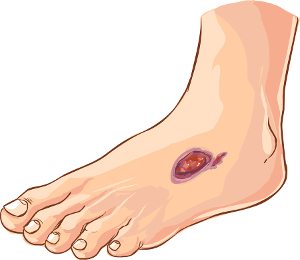For people living with diabetes, proper wound care is necessary. Diabetes can significantly delay healing, making even minor injuries potentially dangerous. Addressing wounds early and following a proper care routine can help prevent complications and keep you healthy. This guide may help you understand the value of wound care and provide practical steps to protect yourself.
Why Are Diabetic Wounds Risky?
Diabetes impacts your body’s ability to heal. High blood sugar levels can lead to poor circulation, which restricts the flow of oxygen and nutrients necessary for tissue repair. Diabetes can damage nerves, reducing sensation in the affected area (a condition called neuropathy). This means you may not feel pain or notice cuts, blisters, or infections until they worsen.
Open wounds in individuals with diabetes are also at a higher risk of infection. Once infected, these wounds can escalate into severe complications, such as ulcers, tissue death, or even amputation. That’s why understanding and acting on wound care is necessary for managing your health.
How Often Should Wounds Be Checked?
Daily wound checks are key for anyone managing diabetes. Set aside time each day to look for injuries or abnormalities on your skin, particularly on your feet. Small cuts, redness, swelling, blisters, or discharge could indicate a problem that needs attention.
Here’s how to perform an effective daily check:
- Wash and dry your feet thoroughly: This confirms your skin is clean and makes it easier to spot any injuries.
- Inspect carefully: Use good lighting to examine the tops, bottoms, and sides of your feet. If it’s difficult to check certain areas, use a handheld mirror or ask for help.
- Don’t overlook other areas: Pay attention to pressure points or areas prone to friction from shoes or clothing.
Spotting issues early can prevent them from developing into more serious problems.
When Should You Call a Doctor?
While many minor wounds can be managed at home, there are certain signs that require medical attention. Contact a doctor or wound care specialist if you notice any of the following:
- Signs of infection: Redness, warmth, swelling, or discharge from the wound may suggest an infection.
- Non-healing wounds: If a wound hasn’t improved after one or two weeks, it’s time to seek professional help.
- Severe pain or loss of sensation: Pain could indicate an infection or other underlying issues, while loss of sensation might worsen unnoticed injuries.
- Fever or chills: These could signal that an infection has spread to other areas of the body.
- Changes in the appearance of your injury: Such as discoloration, bad odor, or enlargement in size.
Prompt treatment can make all the difference in preventing complications.
Visit a Wound Care Specialist
Proper wound care plays a primary role in your overall diabetes management. Whether it’s inspecting your skin daily, maintaining good hygiene, or knowing when to call a doctor, these steps can help you reduce the risk of dangerous complications. A wound care specialist can assess your injury, recommend effective treatments, and provide customized advice to support your healing process. Schedule an appointment today.


Leave a Reply